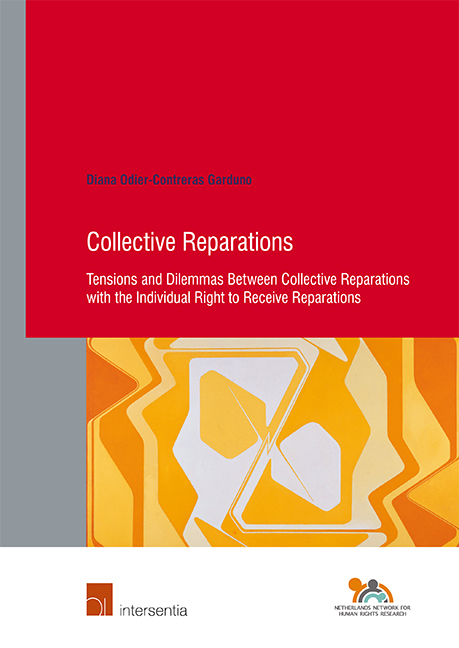 Collective Reparations
Collective Reparations Published online by Cambridge University Press: 31 January 2019
Introduction
While it is true that collective reparations were initially associated with transitional justice mechanisms, the IACtHR's innovative approach to reparations has resulted in the awarding of collective reparations under this legal human rights framework. Although international human rights courts are designed to address isolated cases of individual violations in individual cases and thus to grant individual reparations, most of the cases dealt with by the Inter-American Court of Human Rights (IACtHR or the Court) involve situations of mass repression or civil conflict that affect large numbers of victims. In 2004, the IACtHR became the first international court to order reparations for more than 260 victims in a case concerning the mass murder of a huge number of indigenous community members. While the majority of the cases brought before this Court show a pattern of systematic and widespread violations of human rights, not all cases have involved multiple victims. In cases with large numbers of victims, the IACtHR has granted collective reparations that resemble those granted under transitional justice mechanisms.
Globally, the IACtHR's jurisprudence on reparations has been recognized by several scholars as being the most advanced, comprehensive and creative of its kind. The Court has been challenged by the types of violations that it has had to address, as well as by the specific cultural and individual perspectives of some victims who succeeded in bringing their cases forward, particularly when those cases involved indigenous and tribal peoples. This has, to a great extent, influenced the Court's innovative approach, which involves orders of material and symbolic measures ranging from ordering the State to issue public apologies to mandating the State to investigate human rights violations and to identify, prosecute, and punish those responsible for the said violations.
When dealing with large number of victims, dvantage of allowing victims to define the exact content and detailse violations).vi Furthermore, the IACtHR has granted individual reparations, collective reparations, and a combination of both in cases involving gross violations of human rights affecting large numbers of victims, such as massacres, as well as in cases where collective violations affected indigenous or tribal communities. This chapter analyses the practice of the IACtHR regarding cases dealing with GVHR and involving large numbers of victims, including indigenous peoples. Through this analysis, the chapter aims to understand the patterns underlying the Court's choice of individual, collective or combined reparations.
To save this book to your Kindle, first ensure [email protected] is added to your Approved Personal Document E-mail List under your Personal Document Settings on the Manage Your Content and Devices page of your Amazon account. Then enter the ‘name’ part of your Kindle email address below. Find out more about saving to your Kindle.
Note you can select to save to either the @free.kindle.com or @kindle.com variations. ‘@free.kindle.com’ emails are free but can only be saved to your device when it is connected to wi-fi. ‘@kindle.com’ emails can be delivered even when you are not connected to wi-fi, but note that service fees apply.
Find out more about the Kindle Personal Document Service.
To save content items to your account, please confirm that you agree to abide by our usage policies. If this is the first time you use this feature, you will be asked to authorise Cambridge Core to connect with your account. Find out more about saving content to Dropbox.
To save content items to your account, please confirm that you agree to abide by our usage policies. If this is the first time you use this feature, you will be asked to authorise Cambridge Core to connect with your account. Find out more about saving content to Google Drive.